
IN THE SPOTLIGHT: A Maritime Exposition Honoring the Whidden Sisters’ Legacy
Nestled at the corner of 1st Street and Harbor Drive is an island treasure called Whidden’s Marina. It’s not the most glamorous place on the island, nor the prettiest, but if the walls could talk … oh, the history it has seen. Not a lot has changed on the property over the years, and the owners prefer to keep it that way. Some of the signs hanging on the walls have been there for decades. One in particular that says “Sity Hall” is not entirely inaccurate, because if it happens here on the island you will hear about it at Whidden’s first.
Goats and orchids greet visitors to the marina, and the old storefront windows are full of products from years gone by. Some say if you lift up one of the old moonshine jugs on the windowsills, you can still see a sticky ring where it was last sat down 50 years ago or more. You can pick up some candy or chips, cold drinks, ice, bait and souvenirs from the little gift shop. Marine grade fuel is also available and, sitting just to the side of the building is a small area where one of the current owners, Melissa Joiner Steyer, sells flowers and plants.
If you walk through another door at the marina, one closer to the docks, you will find yourself in the midst of Gasparilla Island history. The Gasparilla Island Maritime Museum features exhibits that include relics and articles pertaining to island history that go far, far back to the beginning of the fishing industry in Boca Grande. The museum is a showcase displaying the life and times of Sam Whidden, the founder of the marina and one of the most important people in the island’s history, and his children.
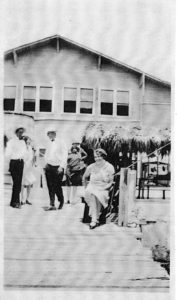
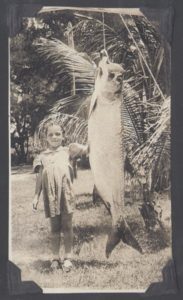

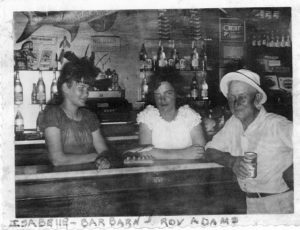
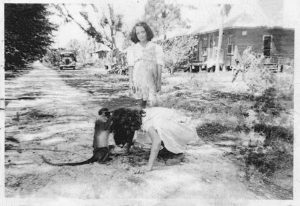
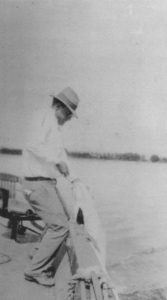
On Saturday, March 19 from 3 to 6 p.m. the board of the Gasparilla Island Maritime Museum will host a “Maritime Exposition Honoring the Whidden Sisters’ Legacy” at the museum and marina. Events will include music, food, local art for sale and more.
“The GIMM Board of Directors has changed, and has hit the ground running,” said Board Member (and family member) Kacy Cheske. “As a board, we have been making a lot of positive changes. We wanted to have an event to share the Museum with the community new changes and existing features.”
Sam Whidden, a Grove City natural-born fishermen, opened up his own pool hall near 4th Street and Railroad Avenue called SD’s Pool Hall after returning home from World War II. Its popularity took off right away on the island, a place that even then was far more oriented to the more subdued, upper-class socialites who came by train to stay at The Gasparilla Inn, play croquet and enjoy beach sunsets.
Eventually Sam got a job as a hunting and fishing guide working for Mr. Frances Crowninshield, husband of Louise du Pont Crowninshield. For a long time, he was making good money between the pool hall and his guiding job and kept putting money away. Eventually he was able to rent what was then known as the Red Gill Fish House and owned by Kingsmore Johnson. In 1926 a man named Joe Spadaro bought the land where the Red Gill was located and leased it to Sam on a handshake. Sam kept that agreement until Joe died in 1952 and he was able to buy the land outright from the Spadaro family.
Sam meticulously built an addition to the fish house, the bottom half of which was meant to be the store. Upstairs he added five bedrooms and a bathroom to rent to wayward fishermen. There were additional docks and boat slips built as well.
In the early 1930s Sam had a new wife, a baby on the way and a new storefront christened “Whidden’s Seafood Market.” The seafood market soon turned into a restaurant. Sam’s wife, Leslie, was helping to manage the place, run tables and prep food at the restaurant when her first daughter, Isabelle, was born in 1934. In 1935 she had a second daughter, Barbara Ann.
The restaurant soon expanded to include a soda and ice cream fountain and a jukebox, and Whidden’s was “the” place to be from dusk until dawn. The fishermen swarmed the docks long before the sun came up, lunch patrons came to sit in the sun and eat soft-shelled crabs. The dinner crowd often stayed for hours to dance far into the soft, sweet-smelling Florida nights.
In 1940 Leslie died, leaving Sam and the girls heartbroken. He closed the restaurant part of the business and turned it into more of a “stop n shop.” It was still wildly popular, as almost everything Sam touched turn to Boca Grande gold. When World War II came around he realized a need for services for the soldiers at the south end port, so he re-opened his dining room and put in some slot machines for entertainment. The jukebox was playing non-stop once more and the dance floor was filled with uniforms and beautiful girls.
For years Sam had been running his faithful fishing boat called “Bacon and Eggs,” but he realized at one point it was time for another. He built another, larger boat called “Chico,” which Capt. Dumplin’ Wheeler ran in the last few years prior to its retirement.
In 1978 Sam died of a heart attack, right at the gas pump of his marina. At that time his daughter Isabelle had four children – Wayne, Donna Ann, Leslie and Melissa – and Barbara had a son named David. The girls ran the marina after their father passed, held dances on the weekends and kept the pool hall running. It was years ago they decided to have the shrimp boat come to the marina, and that tradition still continues today. Every once in a while on Facebook you’ll see a post from Whidden’s that says, “Shrimp boat is in, come get ya some fresh eating shrimp!”
The girls continued to man the marina, as their children do now that they’re gone … but all generations have had to fight for it. As property values skyrocket, offers to sell their land come in. Each time they have refused. It was Isabelle and Barbara’s home, and their daddy’s pride and joy … it was their family’s life’s work.
In the 1990s the property was falling into disrepair and the taxes had become outrageous. Struggling to make ends meet, the girls found help from the community and from Lee County. It was decided the best way to save the property was to turn it into a museum. On Sam’s 100th birthday, December 28, 2000, Whidden’s Marina was placed on the National Register of Historic Places. The buildings were repaired and in 2001 the Gasparilla Island Maritime Museum opened its doors.
Melissa, Isabelle’s daughter, and her husband, Sam Steyer, have three children who have experienced the sheer joy of living in this amazing location right on the water. All of Isabelle’s children, as well as Barbara’s son, have had a hand in keeping the marina alive.
This family who has struggled through so much, and experienced so much joy and good living on this island, have no plans to go anywhere. They will continue to man the pumps and the cash register for many more generations if the fates allow … because they have no intention of leaving the paradise their family helped to create.

